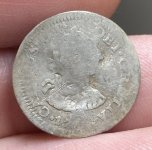Rosco53
Hero Member
- Mar 17, 2018
- 688
- 1,652
- Detector(s) used
- Tracker IV (hobby lobby 40% off ;-) )
- Primary Interest:
- Other
So, I'm kicking around the idea of taking a road trip. I had worked in NJ for a few years and had always wanted to get to Big Brook, but never made it. Looked into it and stumbled upon a site about the Calvert Cliffs and Wesmoreland park for Fossil shark tooth hunting. VERY appealing, but I've never been, so just looking for any insight on here? How exactly does one do it (just walk the beach, sift, etc), what could someone reasonably expect to find, how many days to spend, that sorta thing. LOVE the idea but want to be realistic and see if it'd be worth the time/money/drive (I live in WI). Nearest thing to me to compare would be the Rockford Fossil Prairie in IA, been there a couple times and loved it but a few shells compared to Shark teeth... Any input would be appreciated. Thanks!!




